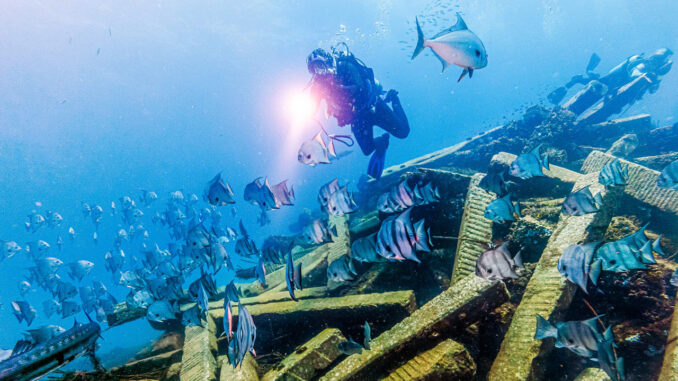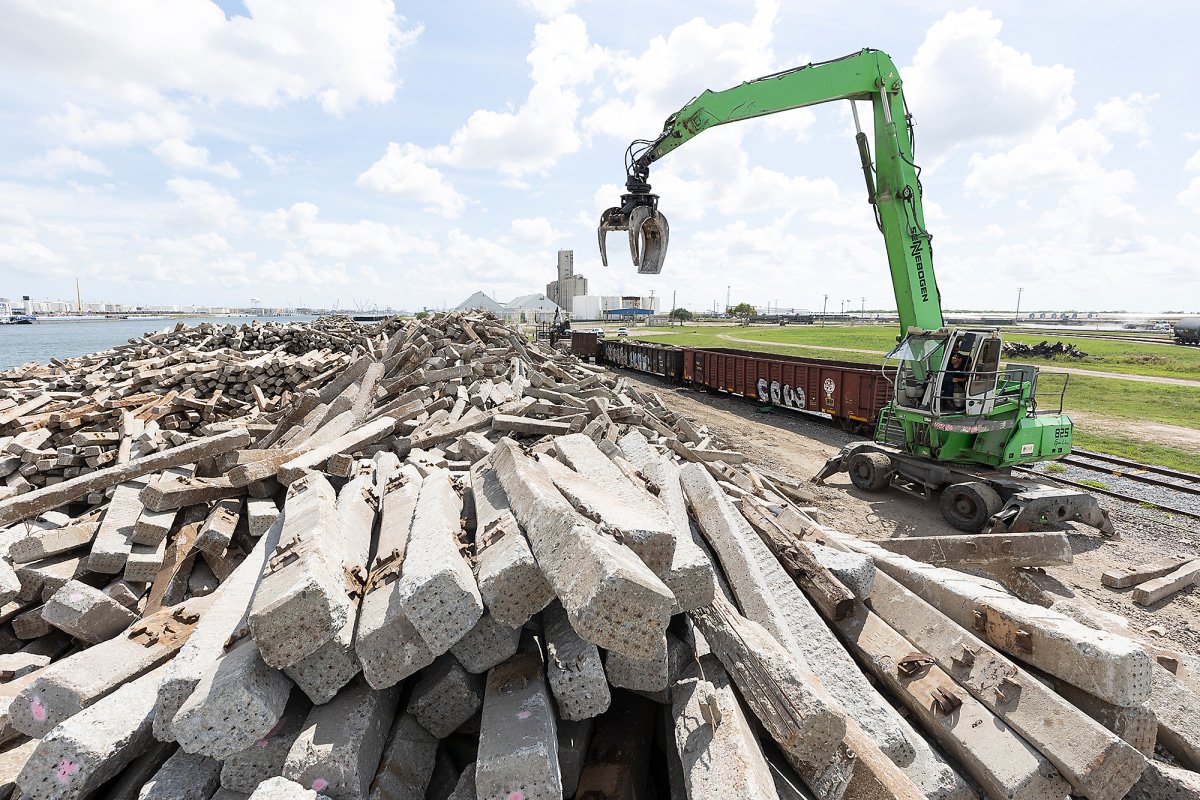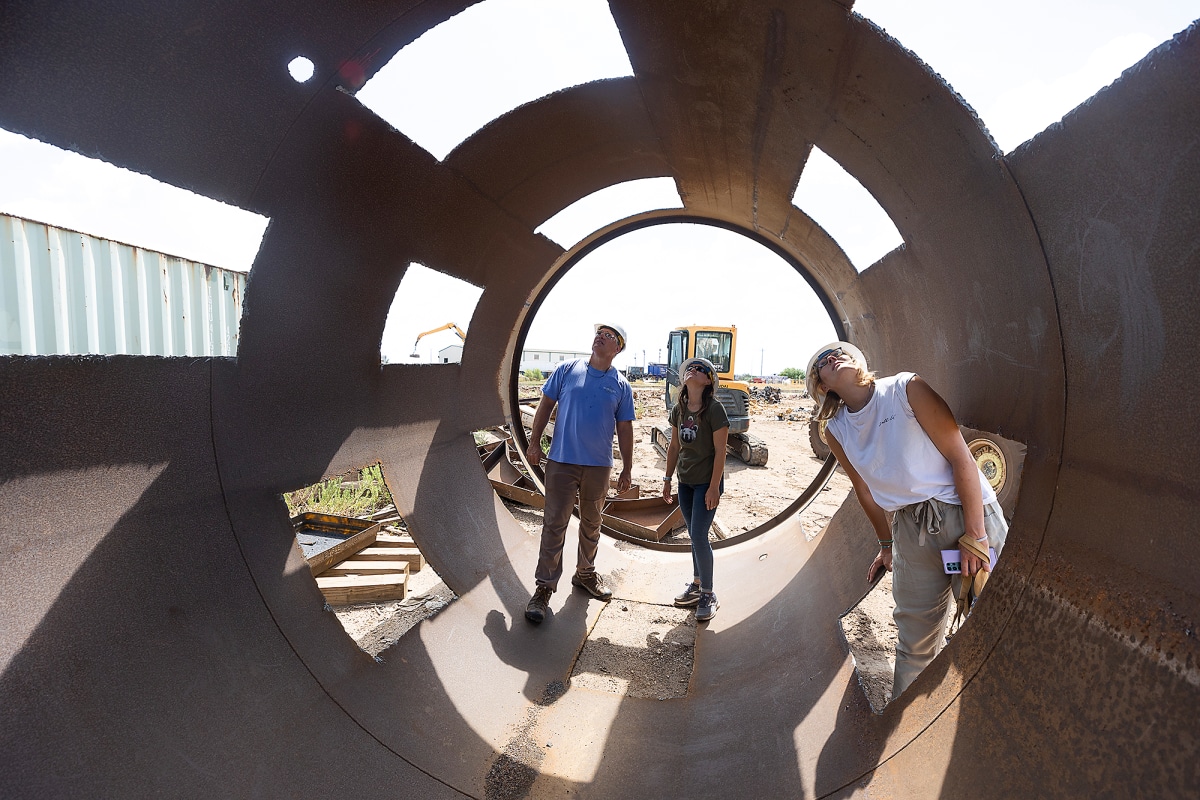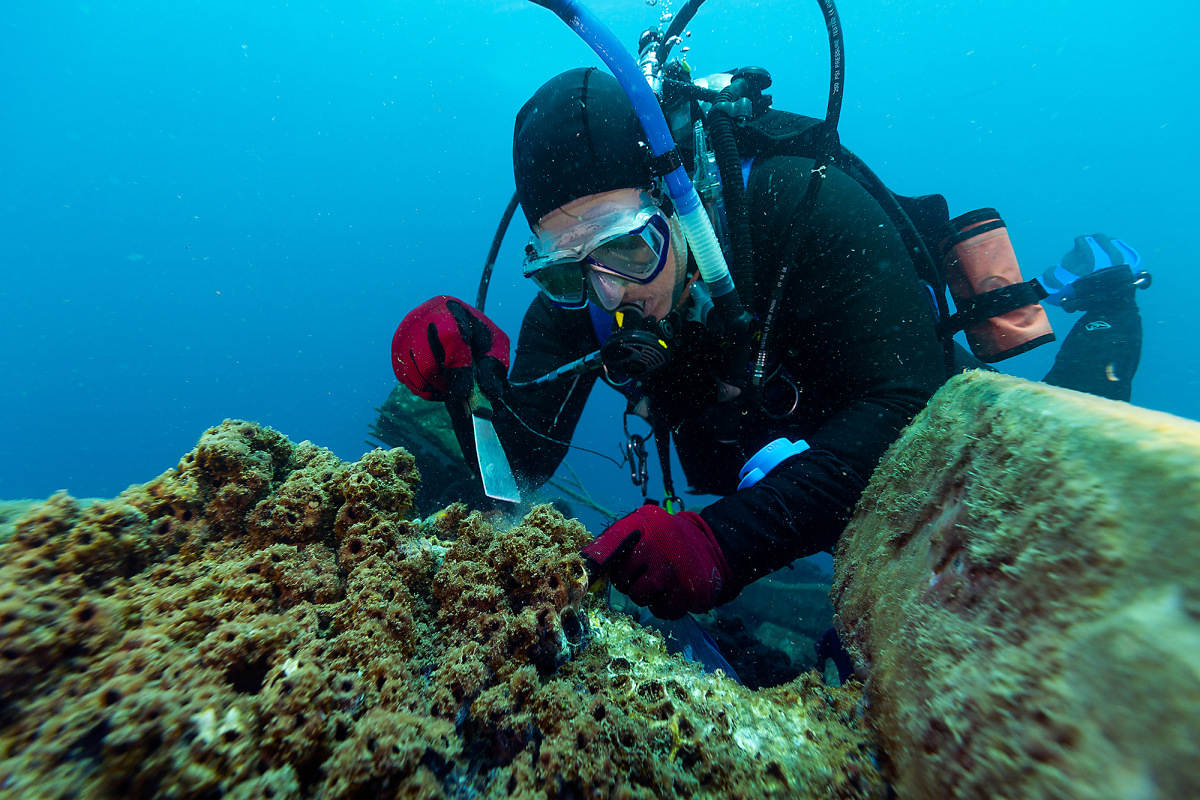
[ad_1]
Twelve miles off the coast of Texas, an intricate arrangement of 76 million tons of man-made material rests on the ocean floor. Known as the Rio Grande Valley Reef (RGV Reef), the artificial reef spans 1,650 acres and is the largest such reef off the Texas Coast. It’s made up of half a dozen sunken vessels that range from 100-foot tugboats to decommissioned shrimp haulers, cinder blocks, and about 7 miles’ worth of used concrete railroad ties donated by BNSF railway, which operates one of the largest freight railroad networks in North America.
Over the past year, the reef has been the subject of an ambitious, first-of-its-kind study. Artificial reefs have been vaunted for decades: They can help increase fish populations by restoring natural habitat that’s been lost to climate change; they can promote conservation efforts; and in the right conditions, they can double as natural breakwaters and help fight coastal erosion. In the U.S. in particular, they are also a magnet for recreational fishing, which in 2011 generated $15 billion in state and federal taxes.
Could they sequester carbon, too?
The two-year study, which is currently at the halfway mark, points to a yes. Over the past 12 months, researchers from the University of Texas Rio Grande Valley have found that the RGV reef is indeed sequestering carbon. The exact amount, and whether it is enough to make a significant impact, will have to wait until the study complete next year. But if the findings are conclusive, they could lead to the building of more artificial reefs—provided they’re not made of subway cars, because that most definitely failed.

[Photo: UTRGV]
Artificial reefs are complex underwater cities. They have to be made of the right materials and placed in the right locations to attract the right kinds of marine species. They also have to resist water currents and the constant threat of corrosion, making old vessels, shipwrecks, and objects made of concrete and steel (which are heavy and don’t rust) much better contenders than stainless steel subway cars—or even worse: tires.
Curtis Hayungs, who is the director of the non-profit Friends of RGV Reef, remembers “not one fish in sight” when his team sank the first vessel back in 2015. Just two days later, he told me he found himself taking videos of “thousands of fish and 15 to 20 species.” Over the next eight years, the wasteland he first encountered has metamorphosed into a thriving ecosystem with more than 100 species of fish and 300,000 red snappers in just one of the many micro-habitats within the reef. (Various teams have attempted to count fish over the past two years, but the process is far more complex than your typical bouncer with a tally counter.)

[Photo: UTRGV]
To understand how reefs capture carbon, it’s important to take a step back and understand the role that fish and other marine species play in the carbon cycle. Like plants and trees, which capture carbon through photosynthesis then store it in their biomass, fish store carbon in their tissues. The process starts on the surface, usually with phytoplankton. Then, as small fish eat the plankton, and bigger fish eat the smaller fish, the carbon is transferred from one organism to another.
When a fish dies, their organic matter sinks to the ocean floor in a process that bears the oddly poetic name of “marine snow.” There, the carbon is locked into ocean floor sediments “for as long as we can imagine,” says Richard Kline, a professor of environmental and marine sciences at the University of Texas Rio Grande Valley, who is leading the study.

[Photo: UTRGV]
Technically, the carbon cycle would exist even without reefs, artificial or natural, but as Kline points out, fish need habitat to settle on “and grow up.” Some regions like the Golf of Mexico, never had many reefs in the first place. Artificial reefs themselves do little to capture carbon, but they provide much-needed habitat for fish that may otherwise starve in the open water or fall prey to predators without nooks and crannies to hide in. In other words: The more reefs we build, the more fish they will attract, the more carbon they will capture.
For now, the team has only measured the amount of carbon present in the actual fish found in the reef. For the occasion, they used a wild combination of remotely-operated vehicles (ROV) equipped with high-definition video cameras, and acoustic sonars, the result of which had to be calibrated by catching and weighing various fish. It was worth the effort: Kline says he was surprised to find about 15% of organic carbon in fish’s soft tissues. This may not sound like a lot, but Kline says it’s on par with the percentage of carbon that is usually found in a moss animal called bryozoa, which is well known for its ability to capture carbon.

[Photo: UTRGV]
Where Kline expects even more promising results, however, is in the sediment that has collected on the surface and around the reef. Already, the team has scraped materials from the surface, then sucked those up with a repurposed underwater swimming pool vacuum. “We had to develop new techniques for this because once you scrape some of this structure of the bottom, it starts floating away and a fish that likes to eat those things might start eating before you get it,” he says. Now, they have to analyze those in the lab.
We won’t know the results for another year, but if they are convincing, they could also help Friends of the RGV secure funding to expand the reef and build more nearby. “We want to be as diligent as possible making the designs for these reefs to make sure they do what we want them to do,” says Kline, “and if they can contain more carbon, that might help us more put out more reefs and convince more people that they’re important.”
[ad_2]
Source link
Leave a Reply